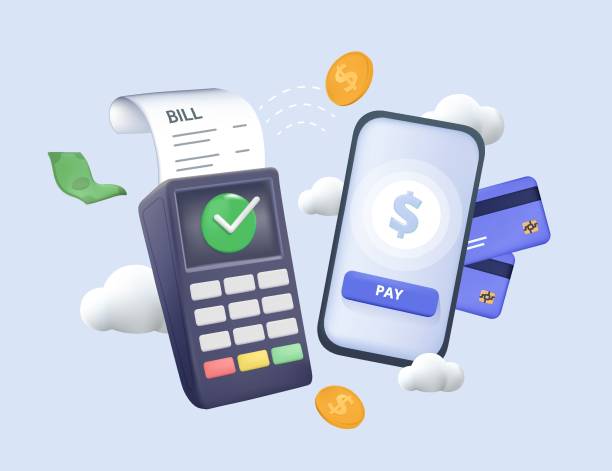Hey there, savvy entrepreneurs! So, if you’re diving into the world of e-commerce or thinking about expanding your online business, you’ve likely considered two of the biggest players in the game: eBay and Amazon. Both platforms have revolutionized how we shop and sell online, but which one is the right fit for you? So, let’s dive into the nitty-gritty of selling on eBay vs Amazon to help you make an informed decision.
Platform Overview – eBay vs Amazon
eBay: The Online Marketplace Pioneer
Founded in 1995, eBay is one of the earliest pioneers of online marketplaces. Additionally, it started as an auction-style platform where individuals could sell their items to the highest bidder. Also, over the years, eBay has evolved to include fixed-price listings and even a “Buy It Now” option.
Amazon: The E-Commerce Giant
Amazon needs no introduction. Established in 1994, Amazon has grown from an online bookstore to the world’s largest e-commerce platform. So,, with millions of products, Amazon offers a vast range of categories and attracts millions of buyers daily.
Fees and Pricing
eBay Fees:
- Listing Fees: eBay charges insertion fees for listing items, though you do get a certain number of free listings per month.
- Final Value Fees: A percentage of the item’s selling price (including shipping) is taken as a final value fee.
- Optional Fees: eBay offers additional services like promoted listings and listing upgrades for an extra cost.
Amazon Fees:
- Subscription Fees: Amazon offers two selling plans – Individual and Professional. Individual sellers pay per-item fees, while Professional sellers pay a monthly subscription fee.
- Referral Fees: Amazon charges referral fees based on the category and price of the item sold.
- Fulfillment Fees: If you opt for Amazon FBA (Fulfillment by Amazon), there are additional fees for storage and order fulfillment.

Traffic and Reach – eBay vs Amazon
eBay:
- Global Marketplace: eBay operates in multiple countries, providing sellers with a global audience.
- Search Engine Optimization (SEO): While eBay has its search algorithm, it’s generally less complex than Amazon’s, making it slightly easier for new sellers to get noticed.
Amazon:
- Vast Customer Base: With millions of daily visitors, Amazon offers unparalleled reach.
- Prime Membership: Amazon Prime members are loyal and often prioritize Prime-eligible listings. Also, increasing your chances of sales if you use FBA.
- SEO and A9 Algorithm: Amazon’s search algorithm, A9, prioritizes relevancy and customer satisfaction, which can be a bit challenging for new sellers to master.
Customer Trust and Reviews – eBay vs Amazon
eBay:
- Feedback System: eBay has a feedback system where buyers can rate and leave comments about sellers, helping to build trust.
- Return Policies: Sellers can set their return policies, though they must adhere to eBay’s guidelines.
Amazon:
- Amazon Prime: Prime members often trust Prime-eligible listings due to Amazon’s reliable shipping and return policies.
- Customer Reviews: Product reviews play a significant role in influencing purchase decisions on Amazon.

Seller Support and Tools – eBay vs Amazon
eBay:
- Seller Hub: eBay provides a Seller Hub with tools for managing listings, analyzing sales data, and more.
- Community Forums: eBay has active community forums where sellers can seek advice and share experiences.
Amazon:
- Seller Central: Amazon’s Seller Central offers robust tools for inventory management, sales analytics, and advertising.
- Amazon FBA: Fulfillment by Amazon provides sellers with storage, packing, and shipping services, taking the hassle out of order fulfillment.
eBay vs Amazon: Which is Better for You?
Choosing between eBay and Amazon boils down to your specific needs, goals, and business model. So, here’s a simplified verdict to help you decide:
Choose eBay if:
- Flexibility is your priority: eBay allows you to set your return policies and offers a more straightforward fee structure with options for auction-style listings.
- Community Engagement: If you enjoy being part of a seller community and value direct interactions with buyers. So, eBay’s community-focused platform might be for you.
- Lower Start-up Costs: With fewer mandatory fees, eBay can be a more budget-friendly option for new sellers or those with limited inventory.
Choose Amazon if:
- Scale and Reach: If you’re aiming for massive exposure and want access to millions of potential customers. So, Amazon’s vast customer base is hard to beat.
- Convenience: Amazon FBA offers hassle-free fulfillment, taking care of storage, packing, and shipping, allowing you to focus on growing your business.
- Prime Benefits: If you can offer Prime-eligible listings, you’ll attract Amazon Prime members who are often more willing to buy due to Amazon’s reliable shipping and return policies.

The Middle Ground: eBay vs Amazon
Many successful sellers find that the best strategy is to diversify and sell on both eBay vs Amazon. So, this approach allows you to:
- Maximize Reach: Tap into different customer bases and demographics.
- Test and Learn: Experiment with different pricing strategies, listing formats, and marketing tactics to see what works best for your products.
- Reduce Risk: Diversifying your sales channels reduces dependency on a single platform and mitigates the risk of potential changes in policies or fee structures.
Final Thoughts: eBay vs Amazon
While eBay vs Amazon have their strengths and weaknesses, there’s no one-size-fits-all answer. Additionally, your success on either platform will largely depend on your adaptability, marketing efforts, customer service, and product quality.
So, whether you choose eBay, Amazon, or both, remember that e-commerce success is a journey, not a destination. So, stay informed, stay flexible, and most importantly, stay passionate about delivering value to your customers.
Happy selling, and may your online business thrive!









[…] Fees: Listing your item on eBay incurs an insertion fee, typically ranging from $0.30 to $2.00 per listing, depending on the […]